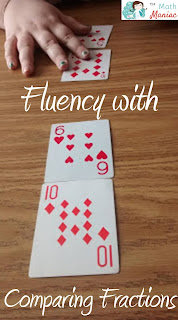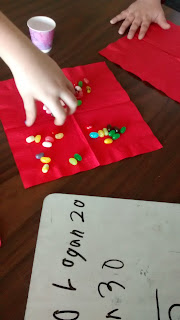This week are going to take a deeper look at the mini-lesson portion of math workshop and talk about what work time looks and sounds like.
Mini-Lessons
Mini-lessons during math workshop should be
- Short and focused (under 10 minutes)
- Whole group instruction
- Goal is fostering independence

"The more I explained the less my students seemed to understand. The more sample problems I did for them, the sleepier they appeared." (Hoffer page 103)
This quote from the book perfectly sums up my past experience with
teaching rather than listening. As I have shifted my practice from that of an expert giving out knowledge to that of a facilitator helping kids build their knowledge, this quote is no longer true. Many of the ideas presented in this chapter were ones that I have been comfortable with for the past few years. My mini-lessons look a lot like these. As I read, I kept coming back to modeling thinking as something I really wanted to work on.
My Own Experience with Modeling Thinking
I immediately thought of my second graders and solving multi-step problems. We are finishing the year up with more practice adding and subtracting 2 and 3 digit numbers and I wanted them to get the chance to practice these important skills while working on solving problems that involve more than one step. I find that with second graders, story problems can be tricky because there are a lot of words on the page for those who are struggling readers. I decided to use modeling thinking to help these kids out with multi-step problems.
In the spirit of keeping my mini-lesson mini, I presented one problem to students. It was: Jonathan had 172 baseball cards. He spilled his drink on part of his collection and had to throw away 58 of his cards. For his birthday, his friends decided to surprise him with 75 new cards. How many baseball cards does Jonathan have now?
I put the problem on the screen and had a student read the entire thing. I then thought aloud about how overwhelmed I was with trying to figure out what happened to Jonathan and what I was supposed to do. I decided aloud to tackle the problem one sentence at a time and to stop and think after reading each sentence. I switched to a new slide on my screen that had one line come up at a time. After reading each line, I stopped and thought aloud about what I knew. I would then reveal the next line and repeat. I did much of the thinking aloud but also had some students contribute to my think aloud.
When the problem was solved, kids shared what I did to make a challenging problem easier. Then I sent them to work with a partner on 2 additional multi-step problems involving some combination of addition and subtraction. They did an amazing job and really focused on what strategies made it easier. They finished by writing their own multi-step problems. Tomorrow I will start class with a think aloud on one of their problems and then they will pair up again and solve another few examples.
Work Time
The postulate and question of the day at the beginning of this chapter really helped me think through the big ideas about work time.
How can we facilitate thoughtful and productive work time for math learners?"
Facilitating thoughtful and productive work time for math learners is something I have worked hard at developing over the past five years. I think this is a strength in my classroom and in my school. My challenge for next school year will be to make this thoughtful and productive work time work in a multi-age setting. With our declining enrollment over the past few years, we have had multi-age classrooms but have been separating kids by grade for math class. Next school year it is my goal to work with teachers to build capacity for truly multi-aging. I think it will be a fun challenge to see how we can structure thoughtful and productive work time for such a diverse group of math learners.
 "Students learn most when they spend math work time thinking, talking, and making meaning of mathematics for themselves."
"Students learn most when they spend math work time thinking, talking, and making meaning of mathematics for themselves."
This quote sums up my teaching philosophy in one neat sentence. To me, this is where the fun and the learning of mathematics takes place. I know in my own education the math classes where I did the most talking were also the ones I did the most thinking and the ones where I finally had a chance to construct the meaning of mathematics for myself. This nicely summarizes the constructivist ideas around learning and is what I strive to do each and every day in my classroom.
"pages of mindless computation do not foster the construction of new knowledge. Learners need the opportunity to collect, generate, and frame their own problems and inquiries. The learner must be in the drivers seat." (Hoffer, p. 116)
This used to be so challenging for me. I was very afraid that giving up the drivers seat meant giving up control of the situation and of my class. It took years of seeing how other teachers managed their classrooms and employing the best management strategies before I was able to step back and really let my students be in charge of their own learning. It is my goal to give the illusion of the classroom running itself. I have high expectations for behavior and being on task and I am not afraid to spend the extra time making sure the backbone of classroom management is there. Without excellent management skills, you can never be an excellent math teacher.

 In the past few years, I have posted some of my favorite songs and videos about shapes, counting, multiplication, coins, time, fractions, teen numbers, area and perimeter and addition facts. I try to keep these posts up to date with the latest songs and videos I am using with my students. They are a great way to get a little movement break while still working on important math concepts.
In the past few years, I have posted some of my favorite songs and videos about shapes, counting, multiplication, coins, time, fractions, teen numbers, area and perimeter and addition facts. I try to keep these posts up to date with the latest songs and videos I am using with my students. They are a great way to get a little movement break while still working on important math concepts. 







































